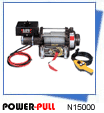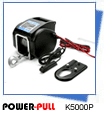越野驾驶指南(英文)
During every"ORE"Beginner class we have a short period set aside for what we call "classroom time", it is during this period that we discuss, among others things, the off-road driving tips listed here. These "tips" are proven material, and used by a number of companies throughout the world, including numerous 4WD manufacturers. Since you’ve read our web pages thus far, you must be ready to sign up for one of ourclasses, right? Hey, we even teachCamel Trophyparticipants and hopeful’s alike!How about you?Maybe you’ve read about"ORE"in one of a number of publications or saw us on KCRA-TV3. Yes?
1) Read your owners manual thoroughly before going off-road, or on road for that matter. Learn your vehicle.
2)Never go out alone as a short trip could be costly. Venturing off the highway alone is never suggested. One can抰 foresee everything that could go wrong. Being prepared yourself, having your vehicle prepared and maintained to a reasonable degree will help counter some problems, but not all. A thought: You're ten miles off the main paved road, your 4WD quits, you have an accident, or someone is injured; Now what?
Taking along another car is a smart thing to do, chances are both cars won抰 quit while out. The second car could surely tow out the first, or go for help if necessary.
Remember the western bound pioneers? Do you have any idea as to how long it took them to cover ten miles on foot? How about the hardships involved? Lack of water? Lack of shelter? Poor clothing? Have you thought of these things?NO?Just think, what if... Your cell-phone doesn抰 work, no one in sight, do you sit tight? Walk out? Something to consider, isn抰 it? Okay, so you walk, do you have the right shoes? Clothing for when it gets cold at night? Water? Well? Lots of questions, but few answers. Bottom line is: Areyouprepared to walk out? Read "Travel Kit".
3) Always make sure your vehicle is prepared before departing. Read "Preparing & Maintaining".
4) Adopt a relaxed and upright driving position with a loose grip on the steering wheel, taking note to keep your thumbs out of the center section of the wheel, thus avoiding broken thumbs from steering wheel kick-back. This is a common problem on vehicles not equipped with power assisted steering.
5) Contact between your right foot and the gearbox tunnel will help increase throttle control. The use of a "dead-pedal" on the left is also helpful. DO NOT use the clutch pedal as a "dead -pedal". Once the clutch is engaged (out), keep your foot clear.
6) Know your minimum ground clearance.
On vehicles equipped with "live" axles (fixed), the minimum ground clearance is the lowest point of the axle housing, normally the differential. This minimum clearance always remains the same as the axle goes up/down with the wheels. To obtain your minimum clearance, measure from the differential housing (its lowest point) to the ground, there it is, your minimum ground clearance. The minimum won’t change, though maximum can when a wheel climbs up.
| The "Live" axle always maintains its minimum ground clearance (arrows left). |
6A) On vehicles fitted with independent suspension however, the front wheels are attached to the A-arms which go up/down independently from each other, at the same time the center portion of the chassis/suspension goes up/down as well, though the exact opposite of the wheels. Type of terrain, as well as braking can effect your ground clearance dramatically; when the front wheels are bottomed on their suspension points (up in the fenders as far as they can go), your chassis and front suspension pivot points are now very vulnerable to damage as they come closer to the obstacle. It is a proven fact, that for heavy duty off-road work vehicles fitted with "live" axles are preferred.
|
|
As you can see from above, the ground clearance varies as the suspension moves up/down. Left: In its unloaded position you could have 8" (example), while Right: In its bottomed position it could reduce to half. Always be aware of vehicle ground clearance and obstacles.
7) Suspension & Wheel Travel.
Since the time man first developed wheeled vehicles his thought must have been on smoothing the ride. Leaf springs have been around since what must be the beginning of time. Horse drawn wagons, buggies and the famed stage coaches had leaf springs. The leaf spring has two advantages over any other form of suspension, in that a) it’s cheap to produce, and b) they will carry heavy loads. A number of today’s 4wds are still built with leaf springs (on a HD pickup its understandable), while others have gone the Coil spring route. Coil springs do allow heavy carrying capacities to an extent while offering a smoother ride and better wheel travel/articulation (movement up/down & angle of axle). Other manufactures have sought to create car like rides on their 4WD vehicles by fitting independent front suspension, either torsion bar or coil sprung, though neither of which is in its element when off-road. The best set up? Coil sprung/Live axles; this set up offers smooth ride with extreme rates of wheel travel (wheel movement up/down) and is still cost effective to build. Independent front suspension, as described in #6A, is expensive, car like, and offers little to the off-roader, as it can be damaged easier than a live axle, has more pieces to maintain/damage, and can not offer the wheel travel and stability when off-road.
8) Know your "Approach angle", "Break-over" and "Departure angle"(Below).Knowing these figures (i.e.: Clearance), you’ll be able to negotiate obstacles much easier without damage to your vehicle. Interested in learning what these figures are on your vehicle? Try a long broom stick. Placing it under the edge of the tire, then lifting up until it makes contact with the body, you now have some idea of your angles. When off-road, drive up to your obstacle slowly, then stop get out and look to check clearances upon approach. When clearing the obstacle, be careful to "walk" the rear wheels off, remembering always that most 4WD vehicles have some sort of overhang beyond the rear axle (when "walking" your 4x4, the use of brakes, a spotter and your own sight will enable you to creep the rear wheels off the obstacle). Damage will result if care is not taken. As far as break-over is concerned, also know as "high-centered", this too will take a keen eye, the assistance of a spotter, and practice.

9) Know your vehicles height and width. Think about parking garages and parking spaces, will your 4WD clear the obstructions within the structure? Now apply the same to overhanging trees, narrow washes and rocks. Easy really.
10) Check the area(s) in which you plan to travel off-road. Ask locals about conditions. Purchase and review local maps. And... When in doubt, get out and take a brief walk to review the terrain ahead. This walk could save hours of digging and/or winching, or the anguish of having your new 4WD damaged.
11) Be aware of changing weather conditions, the last thing you want is to get caught on the desert floor. When in doubt head for high ground (when heavy rains come in), and get out of the washes or off the desert floors. Beware of fast running water... if you can’t swim it, don’t drive into it. Many vehicles have been lost in rough weather and water. Beware!
12) Know your Four-wheel-drive system. Unlike days gone by, the systems of today vary in their modes of operations and capabilities. Review your owners manual or talk with an expert concerning your vehicle make. Don’t assume anything.
13) Engage Low-Range before you need it. Choose the correct gear for the situation, see #12. Note: On vehicles fitted with a manual center "Diff-Lock", this should be disengaged once traction has been regained. However, Low-Range should be kept engaged until clear of the hazardous area(s). FYI: This center differential-lock is just that, a lock, locking the front & rear drive outputs of the transfercase together. When unlocked (disengaged) it will prevent "axle windup" with in the drivetrain. Vehicles fitted with a standard High-Low/2wd-4wd system have no center-differential, and when engaged in 4WD for long periods they will induce axle windup. You may notice that in tight turns while in 4WD that the front wheels will seem to hop and buck, this is the windup trying to escape from the system. Don’t be alarmed.
14) Before entering a difficult section, make your choice of gear selection. Remember that you should ALWAYS use lstgear (First, Low-Range) on down-hills for maximum engine braking effect, and keep the use of brakes to an absolute minimum, the use of which could cause sliding and loss of control. To correct a sliding vehicle, turn into the slide and apply some throttle, you will now have to straighten the steering wheel and let off the throttle. Gear selection for up-hill use depends on the make of vehicle, though 2ndor 3rdwould be a good place to start. Choosing too high a gear can lug or stall an engine, keep you eye on the tach. Using steady rev’s of 1800-2200 rpm is a good starting point.
15) If conditions are soft (marshy ground, sand, etc.) it may be advisable to lower tire pressures. This helps improve traction, and will reduce sinking. Tires will have to be re-inflated for road use.
16) When ground conditions appear difficult, such as rocks, ruts, etc., it is advisable to select a path by foot prior to driving through, thus reducing the chance of getting stuck or damaging your vehicle. The use of a spotter is also recommended.
 | The use of a spotter is always a good idea. |
17) Exercise care when applying the throttle. Excess throttle will cause wheel spin (digging) and could stop forward movement. Don’t dig with your wheels, otherwise you’ll be digging with a shovel!
18) Momentum of a fast moving vehicle will always overcome the drag and reduce the traction needed from the wheels. When it is clear that NO obstacle is in the way to cause damage, a fast approach to a steep hill, soft sand, mud, etc., can very often be effective.
| Keep wheel spin to a minimum, thus keeping forward movement. |  |
19) When crossing ditches, ruts, logs, etc., always try to keep as many wheels as possible on the same type of surface. Avoid getting the wheels airborne. Also ditch & log crossing should be done at 45-degree angles, not head on, thus keeping traction loss to one wheel only.
20) Always be aware of obstacles under your vehicle, keeping in mind you only have so much ground clearance. Avoid existing deep ruts, sudden changes in slopes, plus remember your approach and departure angles.
 | Always be aware of where your Right-Rear tire is, and what it's about to contact. |
21) Maximum advisable wading depth is approx 20-inches. If equipped, fit the bellhousing wading plug prior to setting out. Make sure your engine air intake does not suck water, otherwise great engine damage will occur. Though some vehicles are known for driving through deep water, we don’t suggest it (you need specialized vehicles & equipment). If you have to cross that stream, survey it first. If the water is glass smooth and you can’t see the bottom, a muddy bottom is usually the norm. If choppy and rough, rocks are then the cause. When surveying you’ll have to check depth, current speed, condition of the stream bottom (does it offer traction or not?). Don’t try driving against the current, and if you have to cross, take it a right angles, or angle your way down stream to the opposite bank, letting the current help you along. You are in... don’t splash, this will normally cause an engine to be soaked (causing it to quit, or suck water down the air cleaner). Begin slowly and create a "bow-wake", taking care to keep a steady speed.
22) After driving through deep water (or mud), make sure your brakes are dried out immediately, thus being fully operational when needed. This can be done by driving a short distance with the brake pedal applied lightly. You should also check your air filter for water.
23) When dealing with mud, refer to #10, 13, 14, 15, 16, 17 & 18 for starters. Now think about what gear you’ll use, we normally try second gear low-range (possibly 3rd with a V8 & automatic), keep a steady speed, not too fast, and try not to spin the wheels, as if they are, you are not going forward. If you loose forward movement, lift off the throttle slightly, enough to stop the spinning and see if you regain traction, normally you well. Throttle control and traction is the key to driving in the mud.
24) Should you get stuck, careful thought and experience will usually provide a solution. However, the trick is not to get stuck in the first place. The idea of having a winch is great, but just in case you don’t have one, look at your situation, then clear any/all obstacles from in front of all four tires. Adjust air pressure as necessary, then begin a rocking motion (forward-reverse, etc.). In most cases it will do the trick. If not, it may be necessary to jack up the car and place rocks, matting, etc., under the tires for added traction. It may also be necessary to remove all payload from the load space area.
25) Driving in the snow can be a daily chore for some, or fun for others. The problem isn’t the snow, but the ice under it. Let’s talk freeway snow driving: You’re headed east for Reno over Donner Pass, the summit is some 7300 feet above sea level, the snow line begins a 3000 feet, the CHP has a chain requirement up and is advising all to stay away. So what do you do? Head for the mountains no doubt. Whether you are going skiing for the weekend, or on business, if the CHP has warnings and requirements up,stay home! That cures that, right? No? Like most you’ll go anyway, clogging the roads for all those that have to get across. Don’t, stay home... please.
So you run into driving snow at 3000 feet, by 4000 Cal-Trans has the road blocked checking for chains or 4wds with snow tires (see #26). From this point on the road is white, your vehicle type will have a lot to do with whether or not you’ll have an easy time of it. Lets take a Range Rover first, post-’88 with a viscous coupler transfer (these vehicles are full-time 4WD). Really you don’t have to do a thing, just drive it. For example, if you’re in a Land Rover Discovery or Defender, or a pre-’89 Range Rover, these are fitted with a manual center-diff-lock (still full-time 4WD), and when encountering slick areas such as snow covered roads (or mud), the center-diff must be locked to obtain maximum traction. Leave it locked until blacktop appears from under the snow and traction has be regained (center-diff-lock may be operated at any speed). Now you’re driving a ‘96 Trooper with a V6, or a Honda Passport, now what? It’s in 2WD most of the time, and engaging 4WD on a snow covered road requires slowing and/or stopping in order to engage high-range 4WD (read your manual). Now, some of these vehicles limit the speed in which you can travel in 4WD high-range (meaning highway speed ratio), thus you’ll again have to research such things with your dealer. Anyway, 4WD must be engaged otherwise you’ll have no traction, thus no control, and possibly no forward movement. In fact, the CHP could require you to fit chains, or worse yet, turn back. The Bravada, and vehicles like it, the owner should be concerned when in snow conditions, as though they are built as a street type 4-wheeler, and are not an off-road vehicle, and can do quite well in snow conditions (plowed) with the right tires fitted, they still have no low-range capabilities, thus in extreme conditions can be no better than the average car fitted with chains. As said earlier, the snow isn’t so much the problem, except visibility (keep your lights on low-beam, no driving lamps, but fog lamps okay -yellow even better), its the ice under it. ABS braking is the current fad, and though"ORE"doesn’t endorse ABS as a whole, this is one of the few times they show their worth. Driving in the snow is like racing motorcycles in the rain... you have to be smooth. Don’t use abrupt throttle openings, heavy braking, or quirky steering movements. Apply the throttle smooth and steady. Do all your braking in a straight line (release the pedal prior to making your turn). If in a bad situation,do notlock the wheels up with the brakes! Down shift as necessary, engine braking will slow the vehicle straight and smooth in most cases. Make your turns in a nice smooth arch, don’t jerk the wheel. Think egg shells. Remember that braking distances have increased ten fold, thus you’ll have to adjust your driving habits... don’t follow so close (as you might do in commute traffic), stay off the brakes if at all possible - down shifting instead of constantly dragging on the brakes; stay in one lane - changing lanes can be deadly due to berms of built up snow between the lanes. If you’re spooked about driving in adverse conditions you have two choices; a) stay home, or b) take one of our classes that deal with such.
Here’s a little story.... A gentleman calls about our classes, says he’s just bought a new Jeep, replacing the one he totaled out on Donner during the winter. "What happen?" I asked, "I was coming down the mountains, it was snowing hard, then all of a sudden it spun and I went down an embankment!" he replied. I asked one question of him... "Did you have the brakes on?" "Why yes, and it still wouldn’t stop!". WRONG! No brakes! Lightly if you have to.
Here’s another one... The"ORE"crew is heading home on I-80, while Blain passes the Nevada City exit he finds a Toyota 4WD pickup sideways in the road stopped (very dangerous!). Blain stops, gets out and talks with the driver and his wife, both of whom are freezing cold inside, and Blain asks if they need help. They say they can’t get up the grade, "the truck keeps going sideways". Blain asks if the driver has 4WD engaged, the driver replies "yes!". Blain proceeds to ask if the driver has any chains, which are quickly produced, then goes about fitting them (though the tires were marked "M&S", they were not the type that should be in such conditions). Blain completes fitting the chains and instructs the driver to proceed, that he would follow him up the grade, or tow him if needed. With that, the couple crank up their truck, but it won’t move, the rear wheels (one of them) was spinning, but no action up front. Blain has them hold up, then checks the locking hubs up front. Guess what? They weren’t locked! When in doubt, stay home, or... take our class regarding winter time driving.
Here’s another one for those with children out and about. During the same driving blizzard that Blain came across the Toyota, John and Michael would come across someone in need as well. Descending down the mountain a set of lights were spotted coming up, it is difficult to tell who’s doing what with all that snow falling. As they approached said lights, they noticed the lights were stationary and off to the right. Moments later they’d find an S10 Blazer backed down into a snow drift, three young college girls inside wondering what to do next. After checking on their health, the age old question of... "do you have it in 4-wheel-drive?" was asked, "I think so" was the reply from with in. "Okay then, put it in second gear and lightly touch the throttle and we’ll see what happens", the rears spun. After engaging 4WD low-range and again applying throttle, the Blazer refused to move, its chassis hung up on the drift. With that now known, the only alternative was to winch them out. With the winching in progress John informed the young ladies of the"ORE"classes and handed them some information, to this day we’ve never heard from them. Normal. Just think about what could have happened had circumstances been only slightly different. Let’s not.
Off-roading in the snow can be a blast, though caution is the word of the day. Since your off-road, you can be sure no one has plowed the road or trail ahead. Snow packs quickly when in front, or under your vehicle, a drift of only minor depths can strand you, leaving you with digging and/or winching your way out. When in doubt, survey it. Walk through it, find out how deep the snow is before you drive 5000-pounds of 4WD into it. Though while driving in it, depending on depth and pack, again use smooth throttle, braking and steering methods. Remember that when on a dirt trail/road that the snow will freeze the puddles under it, and every now and again sheets of flying ice may appear as you tear across the surface.
26) Tires or Tyres... There are so many different types of tires available now days that choosing the correct one for you and your vehicle may get a bit confusing. Consider where you live (snow belt or sunny California). Think of your primary use first, then consider how much off-roading you really do. If you’re commuting everyday, you really don’t need Mud T/A’s. Don’t over-tire your vehicle either. Always remember that all wheels, including the sparemustbe of the same type, size and make. If your vehicle is equipped with aspace-saverspare, get rid of it immediately. These so-called spares are more trouble than they are worth, in most cases all but useless. If you’re off-road, or worse, chained up, and you have a flat, now what? If you’re chained?... Let’s say your right-rear tire is flat, you’ll first have to jack up the front and fit thespace-saver,then transfer the proper wheel/tire to the right-rear, where the chains can then be refitted. A lot of work. If you didn’t do so, and fitted thespace-saveron the right-rear, you’ll quickly find out that the chains do not fit. With only one wheel chained you’ll go nowhere. When off-road, you will now have a tire smaller than the others, which isn’t good for the axles and transfercase gears (this applies to any spare tire not of the same size as those fitted to the vehicle), nor is it very helpful when traction maybe needed to get back to pavement. A number of tires, though marked "M&S",are not legal by CHP or Cal-Trans standards, so beware!On a recent trip we spotted a number of 4wd suv’s chained up while crossing Donner Pass, this was due to the type of tires fitted, i.e.; road bias type. This is something we don’t understand. A number of 4wd owners (and dealers) have a nasty habit of fitting overly large tires to their 4wd’s. It may look good, but chances are it has a number of draw backs. The larger the increase in tire diameter, the more the final drive gear ratio is effected, as is performance. Large tires also effect hub bearings, steering, as well as suspension and ride, the latter two relate to excessive un-sprung weight on the axles. Finally, the speedometer will no longer read correctly. Today’s electronic speed-o’s are nearly impossible to re-calibrate. When considering changing the tires size and rim width/dia, check with a real expert, one that will give you the complete story (beware of those just trying to make a sale). As already stated elsewhere, tire pressures can be adjusted to increase traction (and improve ride), but they must be re-inflated prior to road use, otherwise heat build up can cause tire damage and/or blowouts, handling will also be effected. Excessive tire pressure will give a poor ride and poor handling. Check your owners manual first, then tire manufacturer specifications. Do not blow the tires up to their maximum for general road & off-road work, it’s too high.
 | Having the correct tires while off-road, and in the snow, will only benefit you. |
27) Snow chains... How many of you own them? How many have used them? Believe it or not, chains are not only a benefit in snow and ice, but can work wonders off-road as well. If in very slick mud conditions and forward progress is near nil, try fitting the chains (correct sizes with rubber or spring straps, not cable-chains!), you’ll be surprised. Which wheels do you fit them on? Normally on the rear, even more so when climbing up hill, or towing, as the weight transfers to the rear wheels, thus giving you maximum traction. In some cases it may be necessary to fit them to the front, or all four (4) wheels. Just because you own a 4WD, don’t think you’re immune to chaining up while in the mountains, you’re not.
| Even the best 4wd's need snow chains now and again. In the snow or mud, carry a set. |  |
28) Rocks, these can be tricky, and it’s almost an art, either of getting through, or smashing your car (ala Rubicon). We’re not "rock climbers" here at"ORE",and all Beginner & Intermediate courses avoid the rough areas (Advanced & 1-on-1 course may choose to go to such areas). When off-road however, you’ll always encounter rocks of some sort or another. Careful driving and spotting can help you avoid vehicle and wheel/tire damage (be careful with the sidewalls on your tires, rocks can tear them open). Survey the area chosen first. Walk it. Use your spotter as necessary. Find that path through. Drive slowly and with caution, remembering your ground clearance, approach/departure angles, plus your break-over clearance. If rocks are too large to put under your car, you’ll have to go around, or... over them. Be careful. Here’s another story we’d like to share with you. Daddy buys young son a new 4WD for graduation, $35K kind of money. One day vehicle arrives at our shop on a tow truck. With only 4000 miles on the clock it has four flat tires, four damaged rims, a bent front bush guard, rear lamp guards ripped off, the front axle bowed, and paint scratched to death. We asked what and where this had happened, the reply being "we were on the Rubicon!". "What part?", we asked. After a chat, it seems the young 4x4 driver had sped into a large rock field, not having a clue that he’d have to walk the vehicle up and over the immovable obstacles, the expensive damage was the end result of his lack of experience and knowledge.
29) Hill climbing, some think, is a sport in itself. When you see off-roaders rushing up a particular hill for the sole reason of getting to the top, you can be sure trouble isn’t too far behind. In most cases this is a useless sport, damaging the trails, and usually the vehicle (everything from broken axle shafts from excessive wheel spin, to roll overs). If you have to go up, refer to #14 & 18 for starters. Should your vehicle stall part way up, don’t panic! Quickly hold the brakes, engage reverse (re-start engine if needed) and release all pedals, letting the vehicle back down in gear via engine braking, stay off the brakes! With the engine now above you, and the weight shifted onto the rear axle, your vehicle is quite unstable and can go into roll-over-mode very easy. If... the front end begins to slide to one side, quick use of the throttle will straighten the vehicle out, as soon as its once again straight with the trail, release the throttle, DO NOT touch the brakes, as the front end will try to pass the rear when the weight shifts further. We’ve seen what happens to a number of these types of off-road wrecks, sometimes with nasty and deadly results.
When coming down front first, engage low-range/first gear and then nose it over the edge. Let the engine and gearbox do all the work (engine braking). Don’t panic, try and stay off the brake pedal. If it starts sliding, touch the throttle enough to overcome (out run) the slide, then release the pedal once again letting the engine do its thing. Easy really.
30) Side slopes are another hazard of off-roading. Some vehicles can operate on a 45-degree side slope, but only with traction. Basically, try to avoid such dangerous situations when possible.
31) Don’t overload your vehicle. Keep in mind that loads should be distributed evenly within the vehicle if at all possible. Loads behind the rear axle will sag the rear of the vehicles, thus limiting departure angle/clearance. When a roof rack is fitted be extremely aware of weights and how they are distributed. Excessive loads will change the center-of-gravity, thus making the vehicle less stable. Also, beware of the additional height of the vehicle with the rack fitted.
32) Once clear of your off-road area it is most important that you check over your vehicle completely before commencing with your highway travel. It is important that the vehicle is checked over completely for leaks or brush hanging from the frame, or anything else that could prove hazardous to you and your vehicle or other drivers before commencing freeway speeds and travel. Be sure to check & inflate the tires.
33) A quick and brief reminder...
Remember to Check out difficult or unfamiliar terrain.
Remember to drive smoothly with throttle, brake and steering control.
Remember to use common sense, it may be all you have.
Remember to always wear your seatbelt.
Remember to drive with in your abilities, not over your head.
Remember to never go out alone.
Remember to use 1st gear/low-range on down hills... engine braking.
Remember to always check your car afterwards, re-inflate tires, etc.
Remember toTREAD LIGHTLY!









































